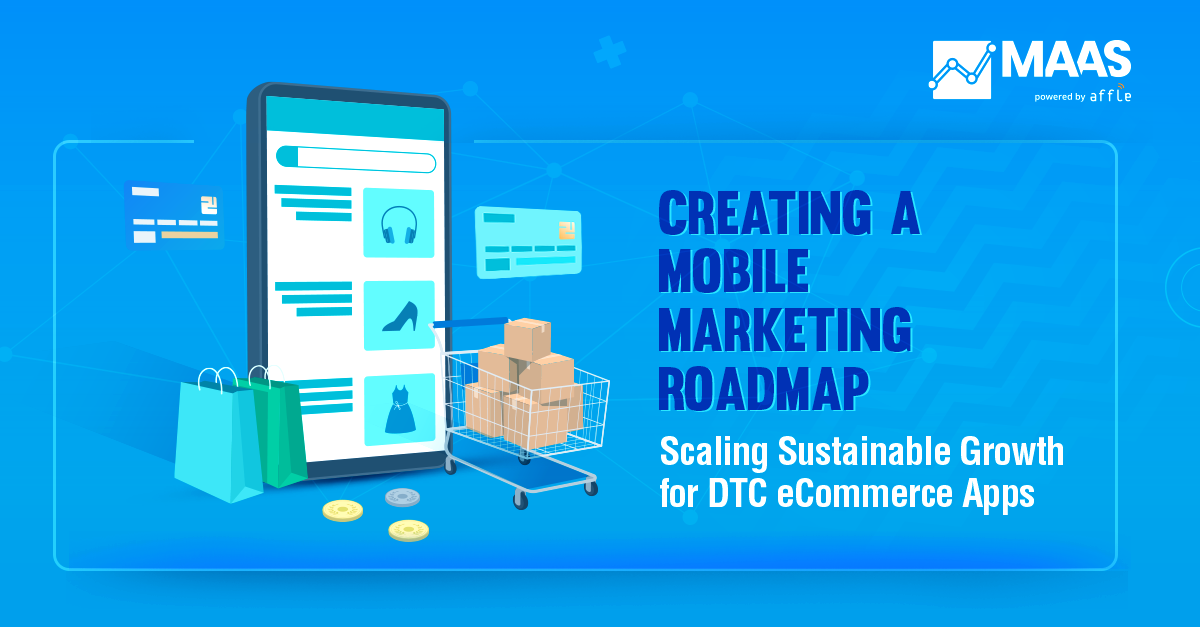December 9, 2021
Submitted by Vipul Kedia, Chief Data & Platforms Officer | Head - MAAS India, Affle

Since the late 2000s, when the DTC (direct to consumer) model was just starting to show itself, the retail landscape has witnessed thousands of brands adopting the new model. India alone accounts for over 800 DTC brands. Why is DTC such a big deal for the eCommerce industry? A successful DTC brand services niches - they focus on solving an existing problem in the traditional retail space. They create models that optimize the supply chain to reduce costs and dedicate more capital to inventory, providing better quality products to their consumers while keeping great margins. A great DTC brand has complete control over their customer experience - they can react faster to customer feedback and improve experiences for higher retention. The simplicity of the model and ability to integrate subscription-like payment formats, make DTC products sticky with a high customer value.
When creating a success roadmap for a DTC brand it is important to have a few bedrock KPIs to establish a strong business. To start off, Customer Acquisition Cost (CAC), Customer Lifetime Value (LTV), Monthly Recurring Revenue and Churn Rate could be the north star KPIs for apps in the launch phase. As the business grows, more insightful KPIs will help write the brand’s expansion story. Once the app has acquired a decent user base, it is worthwhile to track metrics like Average Order Value, Add-to-Cart Rate, Conversion Rate, Purchase Frequency, Product Margin, Return on Ad Spends and Net Revenue Retention.
The Present DTC Landscape
In a recent TOI report the market opportunity for DTC brands is predicted to be $100 billion by 2025. The same report pegs the growth rate of DTC brands at 20% in the last two years. Predicted growth rate in the next five years is 15-20%. Private and venture capital firms in the country are coming together to further push for growth in the sector. Mensa Brands, GlobalBees, 10Club, G.O.A.T Brand Labs, UpScalio are a few disruptive firms that are focusing on the growth and scale of digital brands. With a funding of approximately $ 14.2 billion dollars among them, the brands are concentrating on DTC areas like eCommerce, fashion, retail, digital marketplaces.
Majorly DTC businesses start out with a well optimized website and eventually set foot in the app ecosystem. Most of the top grossing Indian brands in the category have an app to provide a better customer experience. The success stories of brands like Licious, MyGlamm, Nykaa, Myntra, MamaEarth and others hint at a digital marketing strategy paving the way for precision based mobile marketing. Technologies of unified mobile marketing platforms empower DTC brands to create a cohesive strategy to scale their web business and gradually transition to the app ecosystem for better user acquisition, retention and revenue.
Getting Started on the Mobile Marketing Roadmap
For newcomers in the DTC app marketing industry, mobile marketing can feel like an impossible puzzle to crack. Ideally it is best to team up with a mobile user acquisition partner to scale. Prior to choosing a mobile UA partner, check if they meet the following criteria :
- Availability of diverse channels with premium inventories. Lack of channel diversification and low quality inventory can cause loss of ad spends through wrong targeting, ad fraud and lower conversion rates. Therefore, a reputed ad network is the best bet to safely invest marketing funds.
- Ability to run multiple ad formats. An UA partner with the ability to run formats like rich media, playables, videos and interstitial ads based on campaign goals can make the difference in making or breaking the campaign. The offer of a creative suite helps brands to test and optimize the ad format that works best for them.
- Precision targeting allows for ROI maximization. An advanced UA partner allows brands to access multiple users covering a variety of geographies and demography with precision across diversified channels via Direct Publishers, Programmatic Exchanges, and OEM Recommendations.
- Assessing analytics is a must to optimize mobile marketing campaigns. A UA partner offering a single dashboard for multiple channels helps to get a concise view of the entire campaign at one place and draw out important connections between different performance reports. Choose an ad partner that allows analysis of all your campaign performance data with complete transparency under one dashboard to have a holistic view of your ad spends.
- Keeping in mind brand safety, working with reputable UA partners with data driven technologies and years of expertise helps mitigate ad fraud, protect ad spends and prevent campaigns from being stretched too thin across channels. Budget spent, attribution, measurement, granular campaign reports - a unified UA platform can help gain critical insights into the ad campaign for better optimization.
Measuring Success with Numbers & Analytics
1. The Launch Phase
At this phase, the mobile marketing plan should reflect a sense of balance - experimental elements yet the overall strategy should be reasonably budgeted.
Also the learning phase, KPIs tracked should offer insights into knowing the user better. While the usual Downloads, Installs, Churn Rates, Install-to-Register, Install-to-Purchase, Engagement and Retention Rates give a great overview of the app’s performance, what is really important is to get to know the user’s psyche.
Pay per order DTC apps are quite popular among young adults - tech-savvy and unafraid to try new things. While a DTC app with a subscription model can be more appealing to an older demographic who are looking to simplify their daily to-dos. Creating cohorts and analyzing them can help recognize digital behaviour patterns to create look-alike buyer personas that can become key to scaling the app.
Install source gives a fair idea about where the traffic is coming from. It helps to understand where the target audience is spending most of their time online. Based on the distribution of source traffic, app marketers can optimize spend on better performing channels. Categories like fast or alternative fashion, cosmetics, electronics, organic produce impress the younger audience who are majorly available on social, gaming, OTT or music apps. On the other hand, categories like furniture, handmade high fashion, and household products are more for the older audience who prefer utility apps. Niche products like eco-friendly cleaning agents, pet supplies have a mixed following and it helps to experiment with a mix of channels.
2. The Growth Phase
At this stage, the brand should be aware of where the install traffic is coming from and what the average user’s digital behaviour looks like. Armed with this information, it’s time to scale.
App store keyword analysis is an underrated measurable KPI to increase traffic to your app’s page. A keyword analysis not only tells you how many people are searching for the product but it also gives you an idea about what is related to the product that people are searching for. For a DTC brand in the growth phase, it is important to be easily discoverable for the niche the brand is serving.
Ratings and reviews is another significant KPI to focus on. User reviews helps better the app and provides useful insights into how the brand can further break away from the traditional retail model. App store category ranking is a good benchmark to look at this point.
Considering this is the phase where the brand looks at increasing prospects, geo-metrics and demographics can help understand which audience segment and region are accepting the app faster. This is especially helpful for DTC brands that have a mixed audience like organic produce, sustainable fashion, pet products.
3. The Maturity Phase
By now the brand has done what it could to create a great app. It’s time to ensure the product now sticks for good. In-app engagement metrics like average session duration, purchase frequencies are important KPIs to look at. The simplicity of the model creates tough competition in DTC spaces. Within a very short time, multiple apps appear to serve the niche. Hence, ensuring the app becomes a habit with the user is paramount.
Rate and frequency of user communication and how they are engaging is a key metric. DTC apps appeal to the user for the novelty factor and for the ability to provide a personalized shopping experience. Therefore communication becomes a prime KPI to track to encourage retention and in lucky cases, re-acquisition.
Mobile Marketing Methods to Employ
1. The Launch Phase
Now this is slightly tricky at the beginning. Irrespective of whether the DTC app is funded or not, budget constraints are a huge challenge in this phase. Usually a blend of different channels is always a best practice. This is where having a detailed and a variety of clear buyer personas help.
If your DTC app users are a majorly young working population, personalized emails could be a good channel of promotion. However, email content should focus more on the products, offers and deals without being visually overwhelming. If the target audience resides beyond metros, OEM recommendations is a fairly good channel to explore. For buyer personas inclined towards gaming, incentivized downloads is another format to look at. If the brand is looking at a more non-intrusive marketing strategy, a mobile app wall advertising method can also help increase installs.
SMS is another channel option if the target audience is not very tech-savvy. DTC apps that deal with day-to-day food items or target homemakers or elderlies often find this channel to be quite lucrative.
2. The Growth Phase
This is time to show the user they are cared for. Implementing an in-app feedback loop is the first step to get the user to understand their opinion matters. This phase requires a good blend of brand and performance marketing.
Direct in-app inventories are a great option to test creative strategy. As the app grows, the marketing messaging evolves too. Especially as a DTC brand, displaying the variety of products is quintessential to attracting a user to download the app. Direct in-app inventories allow the flexibility to experiment with a variety of display and video ads that gives DTC brands the freedom to showcase their out-of-box products or offer a price comparison with established retail chains.
This is also time to go big and go social. Since DTC apps majorly service niches and do not have the years of brand loyalty established retail chains possess, it is important to create a strong network of recommendations. Social media and influencer marketing are two significant channels to explore at this time. It allows users to open and participate in conversations around the brand, thereby creating a relationship of trust.
3. The Maturity Phase
Precision targeting can be really helpful to get high LTV users. Programmatic inventory DSPs are a good channel to help optimize the brand’s marketing spends and generate higher ROAS. Co-promotional partnerships with apps the brand’s users are likely to use helps in two ways - the app gets noticed to a new user group and existing users feel rewarded for brand loyalty. It is also a good time to implement in-app measures like gamification to keep users engaged and also to reward them for their continued trust.
The marketing roadmap of a DTC brand is an ever evolving playbook. It is imperative to note that while different marketing options present themselves at each stage, it is important to finally create a strategy that focuses on sustainable user acquisition with a few common KPIs to track throughout every phase.

